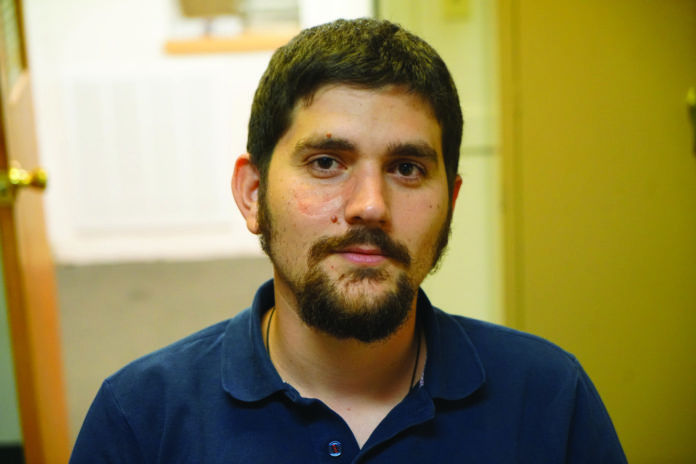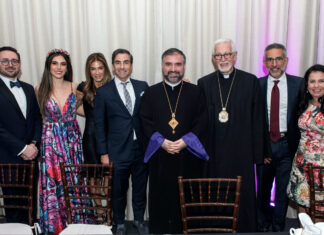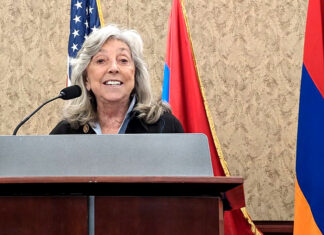WATERTOWN — Hrag Papazian, a Lebanese-Armenian graduate student in his late 20s, is studying the Armenians of Turkey. He came to the United States recently to give a series of lectures at the Institute of Armenian Studies at the University of Southern California. On his way back across the Atlantic, he stopped by in Boston to give a lecture on the Nor Zartonk movement of Istanbul (see https://mirrorspectator.com/2018/10/11/hrag-papazian-to-speak-at-inaugural-zoravik-event/) and gave an interview on his work.
Papazian graduated from Hamazkayin’s Melankton and Haig Arslanian College (formerly called Hay Jemaran) in Antelias, Lebanon, in 2010 and then attended American University in Beirut, from which he received a bachelor’s degree in communication arts. Deciding to switch his focus to anthropology, he went into a master’s program at the University of Oxford in 2013. He wrote on the Christian Armenians citizens of Turkey living in Istanbul for his thesis, but upon starting the doctoral program at the same university in 2015, decided to broaden his topic to include two other types of Armenians, migrants from the Republic of Armenia to Istanbul who came beginning in the 1990s due to the collapse of the Soviet Union, and Muslim Armenians, who began to come to media attention in the early 2000s.
Papazian moved to Turkey where he did ethnographic field work for 18 months, and then went to Armenia to begin to write his dissertation, which he says he has half completed and plans to finish by the summer of 2019.
In it, Papazian said, he primarily deals with understandings of Armenian identity and Armenianness, including the production, reproduction and interpretation of the latter. He compares how the three groups of Armenians mentioned above who are living now in Istanbul each perceive and define Armenian identity. Papazian said, “It turns out that it is quite different. For the local Christian Armenians, Armenian identity is mostly an ethnoreligious identity. It is very much tied with being a member of the Armenian Church.” Papazian explained that the reasons for this includes the Turkish state’s categorization of Armenians as a religious minority and its oppression or censorship of trans-religious understandings of Armenianness. The state tried as much as possible to encourage the religious aspect and to make Armenians assimilate in other realms so that they no longer are an ethnic or national minority with national ethnic claims. The Treaty of Lausanne, which laid the foundation of the Republic of Turkey, also guarantees religious rights. A concomitant reason for the ethnoreligious identity is the religious discrimination which took place throughout the history of the Turkish republic. It made them conscious of their religious difference. Papazian also pointed to what he calls the experiential pairing of Christian and Armenian. People in that community always experience one in tandem with the other. They learn about Armenianness through the church and religious classes in schools because the history of Armenia and the Armenians itself is banned as a subject to be taught in schools.
As for the Armenian migrants, Papazian finds their main ideological pillars of Armenian identity to be different. It starts with Armenia as a homeland. Consequently, they expect Armenians to show concern, interest and love toward Armenia. If they see these lacking, they would immediately start to question their Armenianness. Papazian related an incident recalled by one migrant who worked for a local Istanbul Armenian. There was a debate about politics and his boss told him “you are a guest here — go back to your country if you do not like this one.” The migrant replied, “how come that country is my homeland and not yours? Are you also not an Armenian? If this is your homeland and not Armenia, then what is the difference between you and the Turks? How can I count you as an Armenian?”
A second important pillar according to Papazian is morality. The migrants speak about moral norms or traditions of Armenianness, particular behaviors that are Armenian and others that are not like Armenians. Kinship and gender are also involved. If one acts in accordance with these traditional moral norms, then one is an ideal Armenian, but if not, they start questioning that person’s Armenianness.










